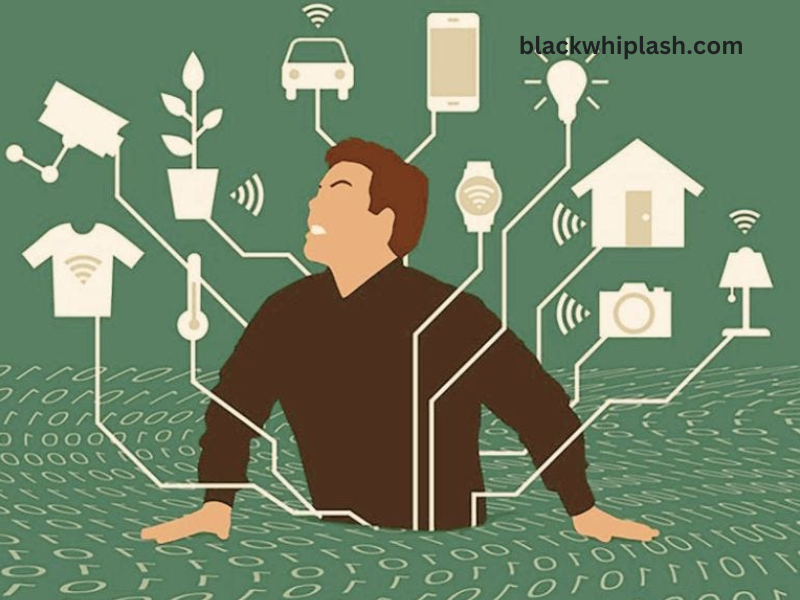In recent decades, technology has profoundly transformed nearly every aspect of our lives, including how we engage in physical activities. From the rise of smartphones and smartwatches to the proliferation of home entertainment systems and online platforms, technology has changed the way we move—or often, how we don’t. This article explores how technology affects people’s activity levels, highlighting the implications for health, well-being, and society as a whole.
Understanding Activity Levels
Activity levels refer to the amount of physical movement individuals engage in throughout the day. This can include everything from structured exercise, like running or swimming, to incidental activities, such as walking to the store or doing household chores. Experts categorize activity levels into three main types:
- Sedentary Activity: Minimal movement, often associated with sitting for long periods.
- Light Activity: Includes activities that involve low energy expenditure, such as walking slowly or standing.
- Moderate to Vigorous Activity: Involves higher levels of exertion, such as jogging, cycling, or playing sports.
Understanding these categories helps to frame the discussion about how technology influences our choices and behaviors regarding physical activity.
The Rise of Sedentary Lifestyles
One of the most significant effects of technology on activity levels is the increase in sedentary behavior. With the advent of digital devices, people find themselves sitting for extended periods. According to various studies, the average adult spends over 10 hours a day in front of screens, whether for work, entertainment, or social interaction. This shift towards a more sedentary lifestyle has raised concerns about the long-term health implications, including obesity, cardiovascular diseases, and other chronic conditions.
The Allure of Digital Entertainment
Streaming services, video games, and social media have revolutionized entertainment, making it more accessible than ever. While these platforms provide enjoyment and social connection, they often encourage prolonged periods of inactivity. The ease of accessing content from the comfort of one’s couch can lead to a significant reduction in physical activity levels. Consequently, many individuals find themselves engaging in fewer outdoor activities, leading to a cycle of reduced fitness and overall health.
Work-from-Home Culture
The COVID-19 pandemic accelerated the trend of remote work, resulting in many employees transitioning to home offices. While this arrangement offers flexibility, it also contributes to sedentary behavior. The absence of a daily commute and the ability to work from a comfortable chair can diminish physical activity levels. As workers adapt to this new environment, they may prioritize convenience over activity, leading to further declines in movement throughout the day.
The Role of Wearable Technology
On a more positive note, wearable technology, such as fitness trackers and smartwatches, has emerged as a tool to promote increased activity levels. These devices encourage users to monitor their movement, set fitness goals, and engage in healthy competition with friends. By providing real-time feedback and reminders, wearables can motivate individuals to move more throughout the day, counteracting some of the negative effects of sedentary behavior.
Gamification of Fitness
Many fitness applications incorporate gamification strategies, turning exercise into a fun and engaging experience. Users can earn rewards, compete in challenges, and track their progress in visually appealing formats. This approach appeals to various demographics, particularly younger individuals who may be more inclined to engage with technology. By making fitness enjoyable, technology can play a crucial role in promoting healthier lifestyle choices.
Social Media and Fitness Communities
Social media platforms have also contributed to the way people approach fitness and physical activity. Fitness influencers and communities provide motivation, support, and inspiration, helping individuals feel connected to others with similar goals. Sharing workouts, progress photos, and personal achievements fosters a sense of accountability, encouraging users to maintain or increase their activity levels.
Online Workout Classes
The rise of online workout classes and tutorials has made it easier for individuals to engage in physical activity from home. With platforms offering everything from yoga to high-intensity interval training (HIIT), people can participate in structured workouts without needing a gym membership or specialized equipment. This accessibility has allowed many to incorporate more movement into their daily routines, especially for those who may feel intimidated by traditional fitness environments.
The Impact on Children and Adolescents
The effects of technology on activity levels are particularly pronounced among children and adolescents. With increased screen time linked to the rise of smartphones and tablets, young people are spending more time engaged in sedentary activities than ever before. This trend has significant implications for their physical health, social development, and mental well-being.
Decreased Outdoor Play
Traditional outdoor play has diminished as children gravitate toward screens for entertainment. Many kids now prefer video games and online content to physical activities, which can stunt their development of motor skills and social interactions. Encouraging outdoor play and structured physical activities is essential to counteracting these trends and promoting healthier lifestyles.
Addressing Screen Time Guidelines
Health organizations recommend limiting screen time for children to ensure they engage in adequate physical activity. Parents and educators play a crucial role in setting these limits and promoting balanced lifestyles. By encouraging active play and limiting screen exposure, caregivers can help children develop healthy habits that last a lifetime.
The Importance of Workplace Wellness Programs
As workplaces adapt to technological changes, implementing wellness programs can be a proactive way to address sedentary behavior among employees. These programs may include fitness challenges, standing desks, or scheduled breaks for physical activity. By creating a culture of health and wellness, employers can improve productivity and enhance employee well-being.
Encouraging Active Commuting
Encouraging active commuting—such as walking or biking to work—can also promote higher activity levels. Employers can incentivize this behavior by providing bike storage, showers, or public transportation subsidies. By integrating physical activity into the daily commute, employees are more likely to meet their movement goals.
The Future of Technology and Activity Levels
As technology continues to evolve, its influence on activity levels will also change. Innovations such as virtual reality (VR) and augmented reality (AR) hold the potential to transform physical activity by creating immersive experiences that blend gaming with movement. These technologies could motivate individuals to engage in more active pursuits while providing a fun and engaging environment.
The Role of Artificial Intelligence
Artificial intelligence (AI) is another frontier that may impact how individuals approach fitness and activity. Personalized fitness plans, guided workouts, and tailored nutrition advice can enhance engagement and adherence to physical activity. By leveraging AI, individuals can receive real-time feedback and support tailored to their unique needs and preferences.
Conclusion
The relationship between technology and people’s activity levels is multifaceted and continually evolving. While technology has contributed to increased sedentary behavior, it also offers tools and platforms that promote physical activity. By leveraging wearable devices, engaging fitness communities, and fostering workplace wellness, individuals can combat the negative effects of a technology-driven lifestyle. As we navigate this dynamic landscape, it is essential to find a balance that allows us to enjoy the benefits of technology while prioritizing our health and well-being. Embracing a more active lifestyle in a tech-centric world is not just a personal choice; it’s a collective responsibility that can lead to healthier, happier communities.


